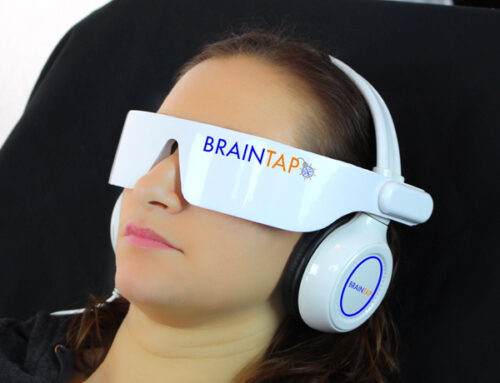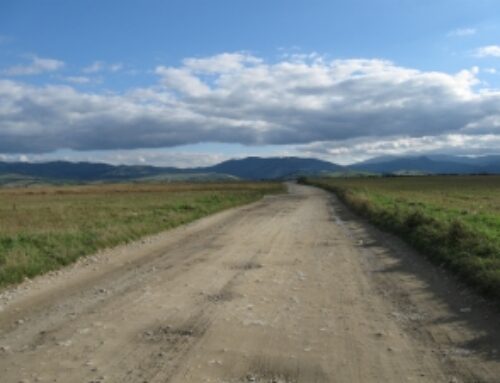Is It All In Your Bones?
Osteoporosis is a progressive decrease in bone density, which develops when bone breaks down faster than it can be rebuilt. Women and the elderly are at a high risk. It affects 1 out of 3 women and 1 out of 5 men over the age of 50.
Some bone facts
Our peak bone mass is achieved by the time we are about 30. Age related bone loss is .5-1% per year and post- menopause can advance to 1-3% per year. Small boned & low weight women are more susceptible to bone loss. Having a diagnosis of osteoporosis does not mean active bone loss is occurring. Therefore, there are 2 ways to find out: 1. Have 2 bone density exams from the same machine and compare correctly. 2. Have a lab work-up that includes bone markers or other tests to include parathyroid and kidneys to find out why the bone loss is occurring.
Signs and Symptoms of Osteoporosis
Usually symptoms are not present – Spontaneous bone fractures – Painful bones – Severe backache – Curvature of the spine
What are some of the causes of osteoporosis?
Parathyroid problems Excess alcohol consumption Kidney stones/kidney disorders Food allergies Poor absorption of calcium in the gut due to decreased digestive function (i.e. decreased HCl) or pancreatic enzymes) or inadequate levels of vitamin D. HCl and vitamin D are required for calcium absorption. Hormonal imbalance (i.e. menopause) Decreased estrogen and progesterone levels; these hormones play a key role in building bone. Estrogen aids in decreasing bone loss by slowing bone break down, but doesn’t build bone. Progesterone Stimulates osteoblasts to build bones. Insufficient weight-bearing exercise which aids to build bone. Environmental toxins – leech calcium in order to bind toxins. NOTE: Fluoride, found in our drinking water, has been “shown to increase bone mass, but the resulting bone is abnormal and lacks strength.” Lead and cadmium toxicity can imbalance mineral content. Dysbiosis or antibiotic use, decreases good bacteria in the gut. Medications can impact bone quality: i.e. Nexium, Prilosec, Prednisone, etc Birth control pills can create a problem in osteoporosis. Hyperthyroidism or excess thyroid medication decreases bone mass by pulling excess minerals out of the bones. Endocrine problems with the parathyroid or thyroid can effect osteoporosis. Anorexia – decreases progesterone, which is needed to stimulate osteoblasts. Cigarette smoking – decreases blood estrogen levels, which mediates control over osteoclasts. Trace mineral deficiency & poor diet – refined foods, soft drinks, caffeine, excess salt and high amounts of protein all increase the risk of osteoporosis by increasing loss of calcium. Too much protein in the diet increases ammonia production in the gut, which prevents the kidneys from reabsorbing calcium, thus increasing urinary excretion of calcium. Large amounts of acid-producing foods (including grains, meat and dairy) can actually pull calcium out of the bones. NOTE: The blood maintains equal levels of both calcium and phosphorus. For example, if soft drinks, which are high in phosphorus, are ingested, the body will leech calcium from the bones to maintain a balanced level of calcium and phosphorus in the blood. For every molecule of sodium ingested, a molecule of calcium is excreted.
Supplement support
Calcium – excess calcium supplementation (suggested dosage is 800-1000 mg./day) should not be taken without combining with other minerals, especially magnesium, in order to avoid calcium from depositing in the soft tissues, possibly causing kidney stones, arthritis, arteriosclerosis and other problems. Also, an acidifying calcium (citrate or malate) is the suggested form of calcium to prevent this problem. Best to have a 1:1 ratio of Ca to Magnesium. Magnesium (citrate or glycinate) – no lab test to give you a reading of status in your tissues. Vitamin K2 is made by the bacteria that line your GI tract. It moves Ca into the proper areas in your body and removes Ca where it shouldn’t be ( arteries, soft tissues) It plugs the calcium into your bone matrix. No test for K2 deficiency, but assessing your diet and lifestyle will give you an idea and if you have osteoporosis, heart disease or diabetes, you are likely deficient. Take K with fat since it is fat-soluble and absorbed better. Vitamin D – to aid in calcium absorption and utilization. Boron – decreases urinary excretion of calcium & aids in activating vitamin D to aid in calcium absorption and utilization. Microcrystalline Hydroxyapatite (MCHC) – a veal bone meal that contains calcium, magnesium, phosphorus and other nutrients necessary for bone growth. Herbs such as dong quai, licorice root, red raspberry and black cohosh have phyto-estrogenic activity, which balance hormonal activity. The sterols from wild yam are used as a natural progesterone precursors. A natural progesterone cream is also suggested. Probiotics – can increase the activity of phytoestrogens. Vitamin B-12, folic acid and B-6 have been recommended for osteoporosis. Vitamin C – to aid in collagen synthesis. Hydrochloric acid (HCl) and enzyme support, if necessary, to aid absorption of nutrients. Green tea Seeds of the Fennel plant-helps bone mineral density and content. It is vital to keep in mind that taking Calcium in excess or isolation without Magnesium, D and K2, can have adverse effects as calcium builds up in your arteries causing heart attacks, kidney stones, etc. These 4 nutrients support one another.
Dietary and Lifestyle Applications
Enjoy a wide variety of fresh, local, organic whole foods, veggies, nuts, seeds, organic meats and eggs, raw organic unpasteurized dairy; increase raw foods in your diet & minimize sugar & refined grains. Avoid refined foods, high protein foods, soft drinks, sugar, dairy products and fried foods. Fatty foods contain fatty acids that form calcium soaps in the gut that interfere with calcium absorption Avoid aluminum-containing antacids, smoking, alcohol and caffeine. Vegetable juicing can help maintain pH balance and sodium potassium ratios. Avoiding processed foods will help keep this ratio in check as they are high in sodium & low in potassium. Fruits and vegetables are alkaline-producing foods and help to maintain bone mineral density. Eat blueberries, raspberries, cherries, etc., high in flavonoids that aid in collagen stabilization. Calcium-rich foods include leafy green vegetables, salmon, sardines, walnuts, tofu, yogurt, raw milk, pith of citrus fruits, carob, sesame seeds, beans, homemade bone broth, almonds, and figs. Magnesium rich foods: seaweed, green leafy veggies, beans, nuts, seeds and avocados. Best source is raw organic cacao..yes high quality chocolate! Vitamin D rich foods: butter, egg yolks, coldwater fish K2-Japanese Natto & other fermented foods like sauerkraut, goose liver pate, Brie and Gouda cheese have high concentrations. No RDA for potassium. Food source -1 tbsp black strap molasses, seeds an beans, whole grains, dried fruit(high in sugar), meat, fish and dairy, vegetables, spice-turmeric. Note: medications as: diuretics, corticosteroids, antacids, etc lower potassium so check with your doctor. Boron-rich foods are good which include whole grains, fruits, vegetables, nuts and seeds. Silica rich foods: cucumbers, bell peppers, tomatoes, and herbs: horsetail, nettles, oat straw, alfalfa and raw cacao. Phyto-estrogenic foods which have weak estrogenic activity, such as papaya, soybean foods, apples, carrots, brown rice, whole wheat and sesame seeds may be helpful. Drink filtered water that contains no fluoride and fluoride free toothpaste. Weight-bearing exercise, resistance training, etc aids in the building of bone mass. Bone is living tissue and requires regular physical activity to renew and rebuild itself. Whole body vibration helps in strength, power, flexibility, balance, tone and leanness. Adequate exposure to sunshine to aid in vitamin D production, about 20 min/day: no sunscreen. Natural progesterone which can increase bone strength and density.
More on Bone
How does salt influence our bone? When our sodium intake is too high, the body tries to get rid of the sodium via the urine and the body also gets rid of the calcium at the same time which leads to kidney stones. Recommended daily intake is about 2,300 mg, however, if you are over 50 or have a heart issue, 1,500 mg is a good target. 1 tsp salt =2,335 mg; 1 Tbsp soy sauce= 1,000mg salt; 1 c spaghetti sauce=1,000mg; Read labels as most processed, frozen, prepared foods contain a lot of salt! Possible indication of osteoporosis on a Blood test: TSH Decreased /Uric Acid Increased /Serum Phosphorus Increased Alkaline Phosphatase Normal to decreased /Serum calcium Decreased . Fosamex? Boniva? Etc? The latest study suggests that women who have been on these bisphosphonates for more than 5 years have a 3 times risk of bone fractures. The minerals in your bone give it rigidity and density and the collagen matrix gives it flexibility. Fosamex builds up the minerals in the bone, to make it look dense, but the bone is extremely brittle and prone to fractures. Since bone requires the removal of unhealthy bone and replacement with new bone to stay strong, Fosamex DOES NOT build new bone. It only kills the cells that break down bone so your bone is not going through its normal regenerative process. Some possible issues with Fosamex: increases risk of ulcers; liver damage; digestive inflammation; kidney failure; skin problems; decrease level of Ca in your blood; osteonecrosis (jaw bone death); & serious eye inflammation leading to possible blindness. Studies have found that women with low bone mass have twice as likely a chance to develop Alzheimer’s or dementia than women with strong bones. Calcium is best taken in smaller more frequent doses with meals. Ca citrate or malate is better absorbed than Ca carbonate as it has an acid component needed to digest the Ca. Only take about 200-300 mg at once which is what is in a serving of yogurt or glass of mild. 30% of the Ca we take is absorbed. Ca absorption is increased by 50% if you have enough Vit D. Magnesium is needed to balance Ca, but too much magnesium can cause loose stools. 1,000-1,200 mg total from all sources is recommended per day for Calcium. However, if there are chronic GI issues, this may lead to malabsorption and one may need more Calcium. Magnesium is a crucially important mineral for optimal health as it activates muscles, nerves and energy through ATP; helps digest proteins, carbohydrates and fats; serves as a building block for RNA & DNA & is a precursor for serotonin. References: The Calcium Lie by Dr Robert Thompson The Magnesium Miracle by Carolyn Dean Vitamin K2 and the Calcium Paradox by Dr Kate Rheaume-Bleue
7 DAY MEAL PLANS
1.Breakfast-2 poached eggs; ½ c oatmeal; 1 c fresh berries Snack- cut up veggies with tofu or hummus spread/dip Lunch-Large green salad w/lots of veggies, avocado, goat cheese, almonds, olive oil vinaigrette Snack-1/2 c plain organic yogurt; 1 tsp flax oil/seeds ¼ c granola Dinner-3 oz salmon; steamed broccoli; 1 small yam 2.Breakfast-Protein smoothie with almond/coconut milk, berries, almond butter, omega’s, veggies Snack-trail mix: almonds, walnuts, pecans, pumpkin seeds, sunflower seeds, cranberry pieces Lunch-Vegetarian chili; Large green salad Snack-Celery w/ sesame butter Dinner-2 egg spinach omelet; beet salad 3.Breakfast-1/2 c oatmeal; 2 poached eggs, grapefruit Snack-Trail mix with 1 apple Lunch- Tuna melt w/ 1 oz farmer cheese; 1 slice whole grain bread; green salad w/ dressing Snack- Celery sticks w/ sesame seed butter Dinner- ½ c spaghetti squash; spaghetti sauce; ground turkey mix together; Mixed veggie sauté. 4.Breakfast: 1 c plain organic yogurt; 1 c fresh berries; ¼ c granola Snack- hard-boiled egg; cucumber tomato salad Lunch- Chicken w/ veggie salad; mixed greens & potato salad Snack- Celery sticks and almond butter Dinner- Vegetarian chili w/brown rice; spinach salad & avocado 5.Breakfast– Taco w/ chicken sausage, salsa, lettuce, onions, cucumbers, 2 corn tortillas Snack-Veggies w/ hummus dip Lunch-Tempeh/veggie burger w/ onion, lettuce, tomato, whole grain bun; green salad Snack-protein bar Dinner-3 0z halibut or cod or salmon; 1 red potato w/ butter; asparagus w/ onions 6.Breakfast– Protein smoothie Snack- hard-boiled egg; veggie sticks Lunch-Large green salad; 3 0z tri-tip Snack-Trail mix w/ 1 orange Dinner-Turkey meatballs, veggie soup with brown rice 7. Breakfast-1/2 c quinoa cereal with almond mild & almonds/walnuts/1 c fresh berries Snack-Cottage cheese dip; cut up veggies Lunch-Chicken Caesar salad w/ olive oil vinaigrette & avocado Snack-pear w/ 1 oz string cheese Dinner-3 oz cod; steamed broccoli & cauliflower; zucchini & brown rice saute
RECIPES FOR BONE HEALTH
No Crust Spinach Pie (Ca 354 mg Magnesium 76 mg serves 4) 2 Tbsp vegetable/olive oil 1 cup sliced red bell peppers 1 lb ricotta cheese 9 oz frozen spinach –drained 4 eggs 1 cup grated cheese blend Preheat oven to 350. Saute mushrooms /peppers about 5 min. Cool. Blend all ingredients. Add salt/pepper to taste. Pour into buttered 13 x9 pan & top with cheese. Bake 40 min. Stuffed Sweet Potatoes 4 small sweet potatoes Vinaigrette 1 can black beans, drained 2 limes juiced 1 can corn 1 Tbsp oil 3 green onions sliced 2 tsp honey ½ cup cilantro chopped ½ tsp salt/pepper Mix beans, corn, onions & cilantro in bowl. In another bowl mix lime juice, oil, honey, salt/pepper. Pour over bean mixture & toss. Slice baked sweet potato and stuff. Serve. Couscous with Broccoli & Feta (112 mg Magnesium, 163 mg Ca Serves 6) 2 plum chopped tomatoes ¼ cup green onions chopped ¼ cup raisins ¼ tsp/pinch of dried basil, cumin, pepper 1 tsp olive oil 2 cups water 2 ½ cups broccoli florets 1 ¾ cup couscous 2 Tbsp feta crumbled Combine tomatoes, onions, raisins, spices above and oil. Place water & broccoli in large saucepan & add tomato mixture. Stir in couscous. Cover and heat on stove about 1 min. Stand for 5 min. Fluff with fork and top with feta. Green Tea Banana Smoothie 1 cup fat-free vanilla yogurt ½ cup fat-free milk, almond or coconut milk 1 tsp matcha green tea powder ½ banana 6-8 ice cubes 2 tsps honey or agave nectar Blend all together until smooth Vegetarian Chili 2 cups crushed tomatoes Seasoning 1 can corn 1 tsp of: chili powder, ground cumin, garlic powder, 1 can red kidney beans onion powder 1 yellow onion chopped ¼ -1/2 tsp crushed pepper ½ lb mushroom sliced Optional: ground turkey or beef 1 celery heart chopped 1 bunch kale chopped 1 cup quinoa 2 cups water Combine all ingredients into crockpot and cook on low or simmer on stovetop for about 2 hours. No-Bake Energy Bars 1 cup dry oatmeal flakes ½ cup dark chocolate chips ½ cup peanut or almond butter ¼ cup honey or agave nectar 1 tsp vanilla extract Mix all. Sit for 10 min. Form into balls. Put on tray & in frig for 20 min or hardened. Banana Peanut Butter Ice Cream 2 frozen bananas 2 Tbsp peanut butter 1 Tbsp cocoa Optional: cinnamon, coconut, etc Cut banana into slices and freeze. Place banana, peanut butter and cocoa in blender until smooth. Eat and enjoy.




